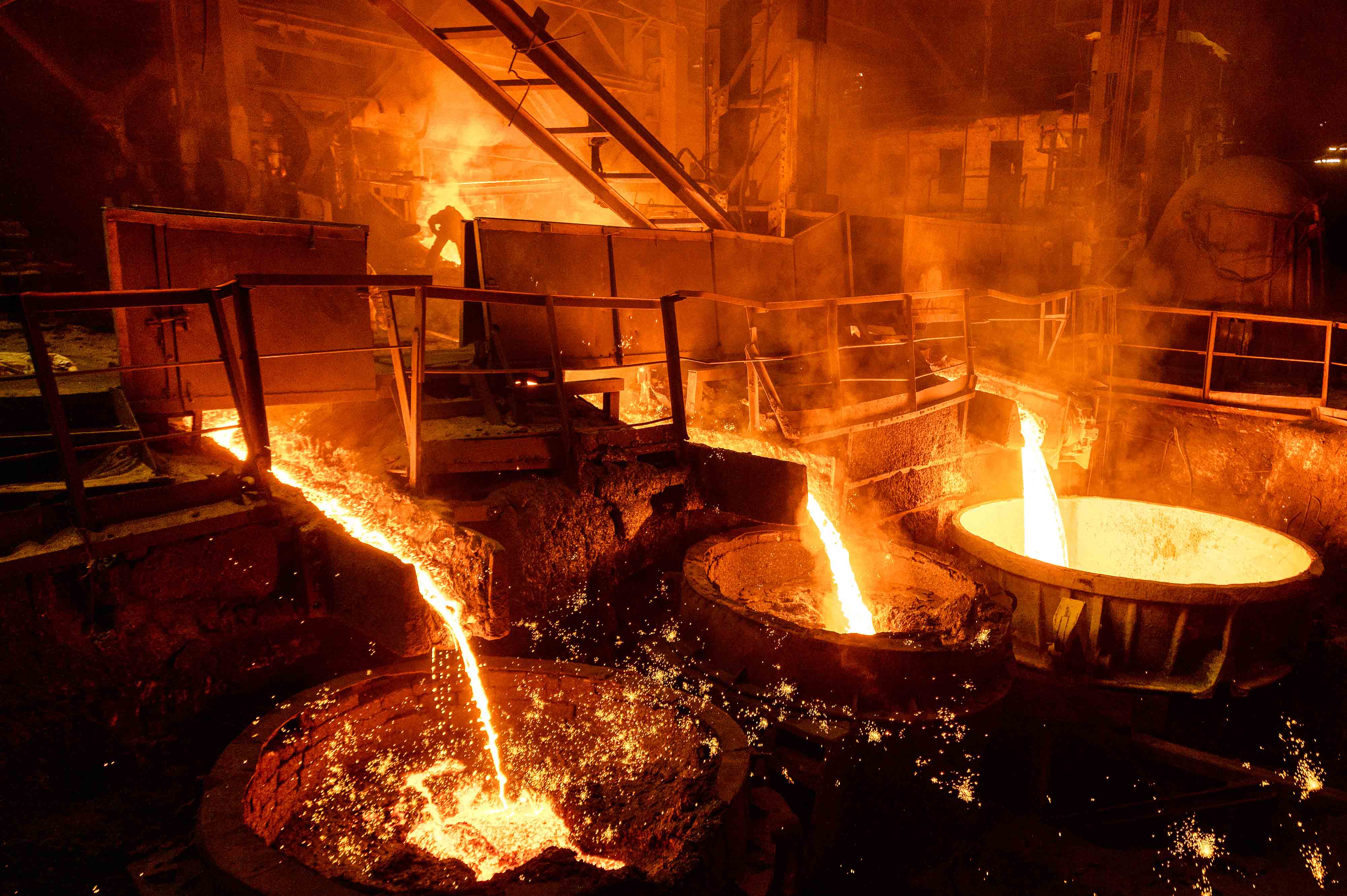Industrial application of pig iron
2025-07-04 17:59:00 hits:0
1. Pig Iron: Core Raw Material in the Iron and Steel Industry
As a core basic raw material in the iron and steel industry, pig iron occupies a crucial position in the modern industrial system. Its main components include iron, carbon, as well as trace amounts of silicon, manganese, sulfur, phosphorus, etc. The carbon content typically ranges from 2.11% to 4.3%. This characteristic determines that pig iron must undergo specific processing procedures to meet the requirements of downstream industries.

2. Pig Iron in Steelmaking Production
In the steelmaking production process, pig iron serves as the fundamental raw material for manufacturing various types of steel products. Through processes such as converter steelmaking and electric arc furnace steelmaking, the carbon content in pig iron can be reduced to an appropriate level, and harmful impurities like sulfur and phosphorus can be removed. Converter steelmaking mainly relies on the heat released by the oxidation reactions of elements such as carbon, silicon, and manganese in hot metal for smelting, which can effectively reduce production costs. Electric arc furnace steelmaking, on the other hand, uses electric energy for heating and is suitable for producing special steels and alloy steels. To enhance the comprehensive properties of steel, alloying treatment is required according to product needs. Alloying elements such as manganese, chromium, nickel, and molybdenum are added to the molten steel, enabling the production of steel products applicable to different fields, including construction, automotive manufacturing, and aerospace. For example, in the production of high-strength steel for automobiles, adding alloying elements can significantly increase the yield strength and tensile strength of the steel, meeting the requirements for vehicle lightweighting and safety performance.
3. Pig Iron Applications in the Casting Field
The casting field represents one of the important application directions for pig iron. Foundries use pig iron as the main raw material and produce various cast iron products through processes such as melting, pouring, and solidification. According to differences in chemical composition and production processes, cast iron can be classified into gray cast iron, ductile iron, malleable cast iron, etc. Gray cast iron has excellent casting properties, machinability, and vibration damping properties, and is widely used in manufacturing components such as machine tool beds and automobile engine blocks. In the production of ductile iron, spheroidizing agents and inoculants are added to the molten iron, causing the graphite to distribute in a spherical shape, which significantly improves the mechanical properties of the cast iron. It is commonly used to manufacture components such as crankshafts and gears that bear heavy loads. These cast iron products play an important role in industrial production and daily life due to their excellent properties.
4. Pig Iron in Industrial Machinery Manufacturing
In the industrial machinery manufacturing industry, after processing, pig iron can meet the stringent requirements for the material properties of key components. For instance, components like large gears and crankshafts need to have high strength, high wear resistance, and good toughness to ensure the stable operation of industrial machinery. Appropriate heat treatment processes for pig iron, such as annealing, normalizing, quenching, and tempering, can change its microstructure and optimize material properties. Additionally, using the casting process to directly form complex-shaped mechanical parts can reduce production costs and processing difficulties compared to other processing methods like forging, thereby improving production efficiency.
5. Technological Evolution and Future Prospects of Pig Iron
Despite the extensive applications of pig iron in industrial production, its high carbon content results in high hardness, poor toughness, and low plasticity, making it unsuitable for direct use in manufacturing. However, this characteristic also provides the basis for subsequent processing. With the continuous development of iron and steel smelting technologies, the application of advanced smelting equipment and processes, such as oxygen top-blown converters and secondary refining technologies, has greatly improved the processing efficiency and product quality of pig iron. Meanwhile, the research, development, and application of new materials have continuously expanded the application fields of pig iron. In the future, pig iron will continue to play an important role in industrial production and achieve more efficient and environmentally friendly development driven by technological innovation.

 en
en  fra
fra  de
de  ru
ru  ara
ara  gle
gle  it
it  jp
jp  kor
kor  th
th  zh
zh 


